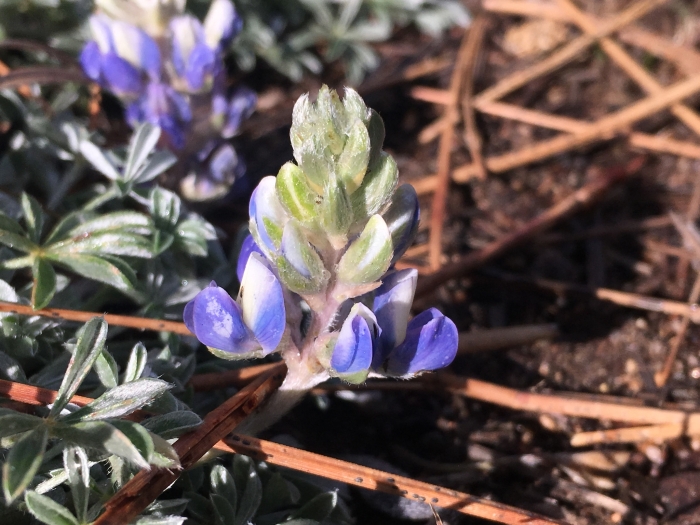Brewer’s Lupine
(Lupinus breweri)
Brewer’s Lupine (Lupinus breweri)
/
/

© Matt Berger
CC BY 4.0
Image By:
© Matt Berger
Recorded By:
Copyright:
CC BY 4.0
Copyright Notice:
Photo by: © Matt Berger | License Type: CC BY 4.0 | License URL: http://creativecommons.org/licenses/by/4.0/ | Uploader: sheriff_woody_pct | Publisher: iNaturalist |




















Estimated Native Range
Summary
Lupinus breweri, commonly known as Brewer’s lupine, is a perennial herb that is part of the Lupinus genus, which includes both annual and perennial plants. Brewer’s lupine is native to the mountainous regions of California, extending into adjacent parts of Oregon and Nevada, where it thrives in subalpine and alpine habitats, including open woodlands and meadows. It is a hairy, mat-forming plant that typically grows to a height of 4-12 inches (10-30 cm) with a similar width. The palmate leaves are composed of 5 to 9 woolly leaflets, giving the plant a soft, textured appearance.
Brewer’s lupine is valued for its ornamental qualities, particularly the dense racemes of blue or purple flowers that bloom from late spring to early summer. Each flower features a distinctive white or yellowish spot, which adds to the visual interest of the plant. The fruit is a silky-hairy legume pod. In cultivation, Brewer’s lupine is used for rock gardens, native plant gardens, and as ground cover in appropriate climates. It prefers well-drained soils and is tolerant of poor, rocky substrates. This lupine requires full sun to part shade and has moderate water needs, though it is drought-tolerant once established. It is generally low-maintenance but can be susceptible to fungal diseases in wet conditions.CC BY-SA 4.0
Brewer’s lupine is valued for its ornamental qualities, particularly the dense racemes of blue or purple flowers that bloom from late spring to early summer. Each flower features a distinctive white or yellowish spot, which adds to the visual interest of the plant. The fruit is a silky-hairy legume pod. In cultivation, Brewer’s lupine is used for rock gardens, native plant gardens, and as ground cover in appropriate climates. It prefers well-drained soils and is tolerant of poor, rocky substrates. This lupine requires full sun to part shade and has moderate water needs, though it is drought-tolerant once established. It is generally low-maintenance but can be susceptible to fungal diseases in wet conditions.CC BY-SA 4.0
Plant Description
- Plant Type: Shrub, Herb
- Height: 0.5-1 feet
- Width: 1-1.5 feet
- Growth Rate: Moderate
- Flower Color: Blue, Purple, Yellow
- Flowering Season: Summer
- Leaf Retention: Deciduous
Growth Requirements
- Sun: Full Sun
- Water: Medium
- Drainage: Fast
Common Uses
Bee Garden, Butterfly Garden, Low Maintenance, Rock Garden, Showy Flowers
Natural Habitat
Native to subalpine and alpine habitats, including open woodlands and meadows in the mountainous regions of California, Oregon, and Nevada
Other Names
Common Names: Mat Lupine, Matted Lupine
Scientific Names: , Lupinus breweri,
GBIF Accepted Name: